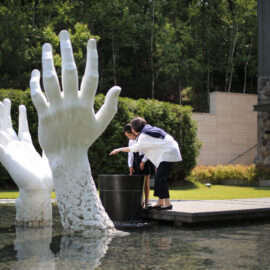□ The Human City Design Award (HCDA), which is hosted by Seoul Metropolitan Government and supervised by the Seoul Design Foundation (SDF; CEO: Choi Kyung-ran), is an international award that recognizes projects (and their designers (either individuals or organizations)) that propose directions for the use of designs in cities of the future. In its second run this year, the HCDA received applications for 99 projects from 31 countries, all of which aim to help dispel the dark times the world is experiencing at the moment. Of these applications, the 10 finalists were recently announced.
□ Evaluation of the submissions was done fairly and based on the wealth of expertise brought by the Selecting Committee’s members, including: Charles Landry (UK), a renowned authority on urban policies, author of The Creative City: A Toolkit for Urban Innovators, and head of the Selecting Committee; Lu Xiaobo, a design expert and dean of Tsinghua University’s Academy of Arts and Design; Seunghoy Kim, professor of architecture at Seoul National University; Anya Sirota, founder of Akoaki; and Stefano Micelli, professor and dean of the School of Management at Ca’Foscari University of Venice. Evaluation was conducted through intense debate that spanned three video meetings.
□ Since the Human City Design Seoul declaration of 2018, the HCDA has strengthened its status as an international award system by operating committees of design experts per continent (via regular video meetings and debates) to find and recognize promising projects.
□ The SDF will be supplementing the award ceremony with a workshop involving 31 teams of university students. The workshop aims to promote awareness and practice of people-centric urban design in Korea. The SDF also operates a private-public-academia association that connects domestic organizations, design experts, and universities.
□ The award ceremony will be held online in March 2021, and the final winner of the Grand Prize will be announced on the same day. If it is possible to host the ceremony at least partially offline at this time, the award will be accepted on behalf of the winner by the ambassador of his/her country.
□ One thing that makes this year’s award ceremony especially meaningful is that people worldwide took interest in the contest despite all of the obstacles posed by COVID-19. The projects submitted for this year’s contest largely fell into one of two groups: 1) approaches to local revitalization that seek to harmonize humans and nature and 2) cooperation of the designer with local residents to transform their community through design.
□ Of these, Brazil’s Sururu da Mundau project focused on lifting a village out of poverty by establishing a virtuous economic cycle that creates profit while also addressing an environmental concern. It uses discarded mussel shells, amounting to a monthly average of 300 tons, to manufacture tiles. The project was evaluated highly for its ecological approach to the resolution of a problem of economic sustainability.
□ Italy’s Countless Cities project transformed the old, abandoned houses in downtown Favara, a rural village in Sicily, into spaces for community interaction, exhibitions, and forums with the help of artists and philosophers from various countries. The project was praised for its use of artistic inspiration to revive an entire village.
□ Elephant World (Thailand) is made up of an elephant-themed hospital, museum, performance venue, and other facilities, all of which aim to maintain the centuries-old relationship between the Kui people and their elephants. It was noted for its stance of ethical responsibility as well as for showing the potential of a tourism business that, based on a sustainable economic model, models how humans can peacefully coexist with other species as equals.
□ There were also several projects that dealt with reviving poor villages/slums. “Design Meets The Corre, Fa.vela,” Brazil’s second HCDA finalist project, is a business accelerator that was participated in by 167 experts to create approximately 90 brands/logos for businesses. Another positive outcomes of the project was the creation of 598 jobs. Indonesia’s Airborne.bdg, a key project of the Bandung Creative City Forum, enlisted the voluntary participation of the residents of Lingawatsu, a district located next to an airport, to create rooftop paintings.
□ Three projects—Medellín River Park (Colombia), which designed a pedestrian bridge and park for the city of Medellín; Fuzhou-Urban Connector (China), which links the city of Fuzhou with a nearby mountain through an elevated walkway without harming the natural surroundings; and Water Fountain Garden (France), a public garden in Senegal’s Dakar that increases residents’ quality of life—all focused on restoring the relationship between humans and nature as well as humans with one another.
□ The other finalists were Sekai Hotel (Japan), a “whole town design project” that turned abandoned houses in small cities into hotels and involves significant participation by local merchants, and the Eden Paradise Memorial project (Korea), which turned a charnel house into a space for both the living and the deceased.
○ Of the 10 finalists, two are from Europe, three are from the Americas, and five are from Asia.
○ The grand prize entry, which will be announced at the award ceremony, will receive a prize of KRW 100 million.
□ The HCDA is granted to the project that best represents the design-related values toward which Seoul, a budding design capital, aspires. The grand prize funds (KRW 100 million) are re-invested in activities related to people-centric design. The first award ceremony, which was held in 2019, named the Dunoon Learning and Innovation Project, which renovated a poor South African neighborhood in an original way, as the winning entry (out of 75 submissions from 25 countries). The team that carried out the project, which used resident participation to create a space that is safe from drugs and crime, created a library for children, an education innovation center, and a community hall.
□ In recognition of its efforts to become a design-friendly city, Seoul was named a World Design Capital and included as part of UNESCO’s Creative Cities Network in 2010. Seoul also received the Lee Kuan Yew World City Prize, known as the “Nobel Prize of urban design awards,” in 2018 in addition to several other international awards. Through the HCDA, Seoul is now well on its way to becoming an award-giving (rather than an award-receiving) city. The HCDA shows Seoul’s commitment to addressing problems faced by cities worldwide through a collaborative effort and using design to make the solutions to such problems as concrete and tangible as possible. The process by which this year’s HCDA winner was selected was a search for a project that embodies the design-related values toward which Seoul aspires: public-mindedness, sharing, participation and cooperation, positive influence on daily life, and sustainability.
□ The SDF, the hosting institution, also operates a project that expands the HCDA to local governments. Most recently, the SDF worked with the Korean Society of Design Science to host the Human City Design Workshop (December 14, online), which was participated in by 180 undergraduate and graduate students in Korea. Through this year’s workshop, which will be attended by 31 teams of university students from all over the country, the SDF hopes to raise awareness of the values of people-centric design among the Korean public. Videos of the submissions will be featured on the SDF’s YouTube channel and displayed in an offline exhibition at the DDP in March.
□ SDF CEO Choi Kyung-ran said, “COVID-19 has made it difficult to meet face-to-face. This, in a sense, means that there is no better time than now to discuss the building of a sustainable future as a means of restoring the people-centric nature of cities worldwide. I hope that the Human City Design Award can serve as the arena for this discourse on a global scale while also paying attention to putting into practice the things that were discussed.”
Additional Information of the Finalists
① Creating a business environment for the poor: Design Meets The Corre, Fa.vela
○ Gustavo Greco Lisita, a professor at PUC Minas who was also the curator of the 13th Brazilian Graphic Design Biennial, participated in the contest through a project that created an entrepreneurial, technological, and innovation-conducive ecosystem for low-income communities.
○ The project’s aim was to create a “visual identity” for businesses operated in the slums (favelas) by expediting the formation and growth of local brands.
○ Fa.vela, which is Brazil’s first favela-based business accelerator, reawakens us to the need for business-accelerating programs (which are focused on social, environmental, and economic influences) to take on a new role.
○ Charles Landry, a member of the HCDA Selecting Committee, evaluated most highly the fact that vocational/practical training conducted in the favelas serves as a link that connects the community to design and marketing.
② Reviving the local economy through a product: Sururu Da Mundaú
○ Marcelo Rosenbaum, professor emeritus of Centro Universitário Belas Artes de Sao Paulo’s Department of Architecture, Rodrigo Ambrosio and Adriana Benguela wanted to add an environmental aspect to the profit system of a poor village.
○ The only source of income in Vergel, a neighborhood of Maceió, Alagoas (a small state in northeastern Brazil), is catching and selling sururu (a type of mussel). However, Vergel was suffering because of the improper disposal and subsequent long-term accumulation the shells (because of the high cost of disposal) and threat to public health. The project’s goal was to use the 300 tons of shells that are discarded every month to make tiles, thus creating a profit source that is also eco-friendly.
○ The designing of a virtuous economic cycle, which achieves both environmental conservation and economic profit, based on which Vergel can lift itself out of poverty emphasizes the power of a profit-making strategy that is based on good intentions to change the circumstances of a local community.
○ Anya Sirota, a member of the Selecting Committee, stated that she was most impressed by how the project addressed the issue of economic sustainability from an ecological perspective.
③ A walking trail that connects the city with nature through “slow travel:” Fuzhou-Urban Connector
○ LOOK Architects’ Look Boon Gee, who carries out a diverse range of design projects in Singapore, created an elevated forest walkway based on an innovative system.
○ The project’s central theme was increasing citizens’ access to the natural monuments of Fuzhou through an urban connector network that allows visitors to enjoy the city and the forest at the same time.
○ The 19-kilometer walkway, which is made up of six basic deck components and latticed steel, allowing it to effectively navigate the undulating topography of the mountain, is based on a technology that does not harm the natural surroundings, showing that nature and technology can exist side by side in harmony.
○ Lu Xiaobo of the Selecting Committee evaluated the project as an “elegant combination” of function, aesthetics, and a healthy natural landscape.
④ Turning abandoned spaces into spaces for exhibitions: Countless Cities
○ Countless Cities is a project undertaken by Farm Cultural Park, a contemporary arts group that includes Andrea Bartoli, a recipient of the Curry Stone Design Prize, and his colleague Francesco Lipari, to give new life to rural villages.
○ Given that more and more people worldwide are leaving the countryside in favor of urban districts, Bartoli and Lipari designed Countless Cities as an “answer” to the bigger questions of what makes a city a city and how a city works.
○ The project, which transformed the dilapidated, abandoned houses in the center of Favara, a rural village of Sicily, into museums for contemporary art exhibitions and spaces for community interaction, shows how we can improve cities within the fabric of daily life.
○ Charles Landry stated that Countless Cities produced an astonishing outcome by using artistic inspiration to revive an entire village.
⑤ Reviving a slum next to an overpass: Airborne.bdg
○ Tita Larasati of the Bandung Creative City Forum (BCCF), who has consistently developed programs (product development, workshops, etc.) for marginalized districts and the children who live there, oversaw Airborne.bdg, a project that aims to improve residents’ quality of life.
○ The project’s goal was to conduct bottom-up test projects in diverse areas (creativity, park greenery, streams, public art, collective urban narrative, etc.) while improving the welfare benefits and sense of social belonging of low-income residents in Bandung’s most heavily populated areas.
○ To create a “Bandung brand” (.bdg), the roofs of approximately 150 buildings were painted through the combined efforts of designers and local residents. Such efforts also led to residents forming bonds with one another, which in turn improved the community’s culture and urban environment.
○ Stefano Micelli of the Selecting Committee stated that Airborne.bdg was designed to be bottom-up based on the reuse of discarded goods and that it promotes local brands and social legitimacy.
⑥ A “whole town” that creates a borderless community: Sekai Hotel
○ Kouichi Yano, the founder of Ukujira Ltd., participated in this contest with a project that aims to realize local revitalization as a means of combating overtourism.
○ The project remodels abandoned houses into hotels and works with local businesses to rebuild the city’s landscape in order to create a sustainable “whole town” hotel. It is a town-designing project that aims to resolve Japan’s chronic problems of population decline and social conflict.
○ Sekai Hotel’s SEKAI PASS, which connects guests with local businesses, has significantly revived the local economy and helped create new, unique cultural attractions.
○ Judge Seunghoy Kim said that Sekai Hotel is a “very small but clever project” that effectively addresses diverse and pressing issues of the city (abandoned houses, tourists, survival of the community, etc.).
⑦ Recovery of the city through a pedestrian bridge and park: Medellín River Park
○ Sebastian Monsalve Gomez and Juan David Hoyos Taborda, the founders of Latitud Taller de Arquitectura y Ciudad, designed and created Medellín River Park next to a highway by refurbishing Medellín’s riverbank.
○ Colombia’s Medellín River was divided into east and west 50 years ago with the construction of a canal, and the only way to cross the river was via bus or car. This project’s goal was to create a pedestrian bridge as a means of restoring the severed relations between the two sides.
○ The project, which has created a public space based on an understanding of the importance of nature and the environment and facilitates the recovery of relationships, sheds new light on the value of people-centric design.
○ Judge Seunghoy Kim said that, through this project, Medellín has produced yet another example of urban design and confirmed its reputation as a “showcase city” of urban design.
⑧ A tourism resource that allows humans and elephants to live together once again: Elephant World
○ This project is the outcome of five years of work by Boonserm Premthada, who started working to create Elephant World in 2015.
○ The project began with the desire to create a place for the Kui people, who were forced to go to tourist capitals in search of work due to the indiscriminate cutting down of trees and subsequent destruction of their home (because of rapid economic development), and their elephants.
○ The project, which is based on a sustainable economic model that encourages tourism and is themed on the unbreakable, centuries-old bond between the Kui and their elephants, demonstrates the potential of tourism businesses that do not harm the environment.
○ Judge Lu Xiaobo evaluated the project as the embodiment of an “ethical and responsible attitude” that honestly thinks about how humans can exist with other species as equals.
⑨ A garden on a garbage site: Water Fountain Garden
○ Emmanuel Louisgrand is French designer and was invited by Kër Thiossane, an African initiative that is interested in science and digital technology, created Water Fountain Garden as a community space that blends the arts with open technologies.
○ Sicap-Liberté is a district of Dakar, Senegal, that was suffering from the unsanitary conditions created by plastic waste. The project’s objective was to create a garden that encourages the integration of multimedia into traditional artistic/creative practices and encourages interdisciplinary exchanges on the environment, society, and public spaces.
○ The project began as a school where residents can learn about and engage in research on and experimentation in the arts, technology, urban ecosystems, economic issues, and neighborhood practices. The garden suggests that cultural policy needs to act as a unifying force in the community through the partnership of diverse players.
○ Judge Lu Xiaobo stated that Water Fountain Garden presents local children and the community as a whole with fun, interactive experiences while also being practical and economical (use of low-cost technologies).
⑩ Rebirth of the charnel house (napgoldang) as a space for communication between the living and the deceased: Eden Paradise Memorial
○ Siyoung Choi, an award-winning architect who has been recognized by prominent international competitions (iF DESIGN AWARD and RedDot Design Award), conducted a project that improved the negative image of Korea’s traditional charnel house (napgoldang, building that stores cremated remains by displaying urns for public viewing).
○ The project was born from the premise that, although a charnel house is a “home” for the dead, it must also be a space for the living. The design introduced a garden as the centerpiece of a facility that changes people’s perception of the charnel house as a place to be avoided. The project also focused on creating spaces for visitors to find solace by gathering to have coffee.
○ The project gives rise to a new perspective of the charnel house as a place that people actually want to visit, where visitors can make lasting memories before death, embodies the stories of the deceased, and offers solace and a quiet space for introspection on the meaning of life and death.
○ Judge Stefano Micelli praised Eden Paradise Memorial for its unique theme and proposal of a new, impressive vision on what a monument is and/or should look like.
-
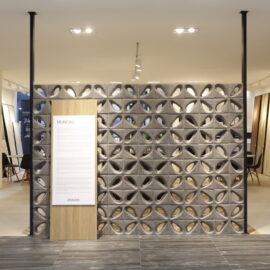
-
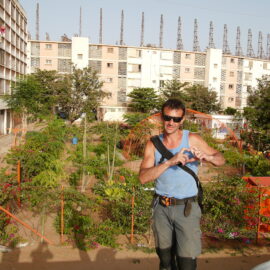
-
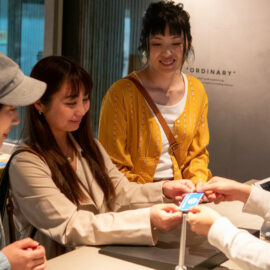
-
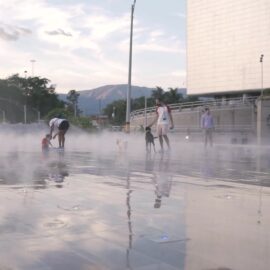
-
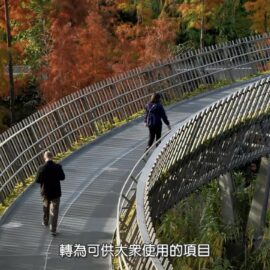
-
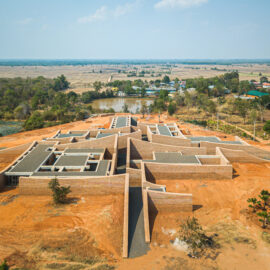
-
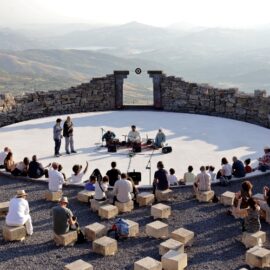
-
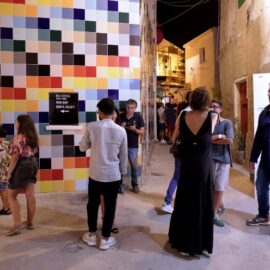
-

-
Brazil_Design Meets The Corre, Fa.vela 3
-
